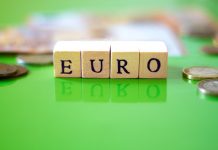Strong German data boost the single currency
While Germany’s Q3 GDP increase of 0.8% over Q2 beat expectations by 0.2% bumped the euro up towards 1.17 USD per EUR, this has come at a cost. European Central Bank Vice President Vitor Constancio congratulated himself on Monday, stating that the ECB monetary policy was highly successful. Yeah, right: after injecting more than €2 trillion in the economy! And even so, the Eurozone is still flirting with deflation.
The German economy is strong. Performance has been positive since Q2 2014, with growth mostly driven by exports. The euro’s weakness since the start of the year has definitely helped. Only strong inflation will help the ECB for now.
China could tighten in mid-2018
China’s economy has showed a slight deceleration, but nothing dramatic. Still, to keep capital from flowing elsewhere, the People’s Bank of China might tighten interest rates in mid-2018.
Chinese October retail sales increased 10.0% annually, below expectations of 10.5%. Fixed investment rose 7.3%, and industrial production increased 6.2% – both behind expectations. So growth is slowing, not surprisingly, given the central bank’s war on shadow lending and pollution. China’s 10-year government bond yield has risen to the highest level in three years, despite injections of CNY 150 billion via reserve repos.
This has allowed CNY to gain, with USD/CNY falling to 6.64. Stronger than expected trade growth continues to support the economy which we don’t see slowing significantly in 2018.
see the PBoC flowing the fed lead with tighter rates in mid-2018.













